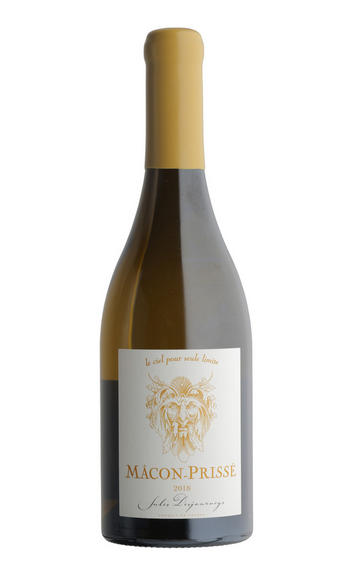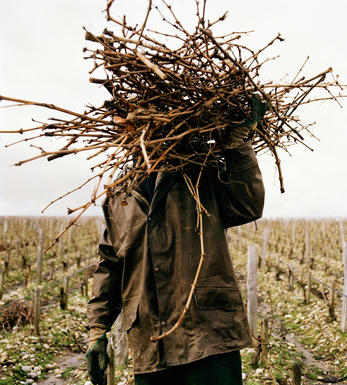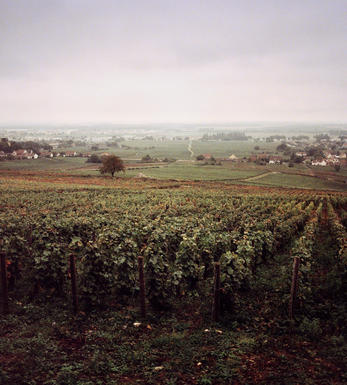
About this WINE

Jules Desjourneys
Founded by Jules Desjourneys in 2007, the winery has gained a reputation for its single-vineyard expressions of Pouilly-Fuissé and its limited production of fine Beaujolais wines.
The estate focuses on small-scale production, advocating biodynamic farming practices and prioritising organic and sustainable methods in the vineyard. The vineyards are carefully managed, with low yields and a focus on expressing the unique terroir of each site.
Pouilly-Fuissé is one of the primary wines produced. The grapes are sourced from old-vine vineyards in the Macon region, specifically from top-quality sites within the Pouilly-Fuissé appellation. These vineyards are known for their limestone-rich soils and ideal sun exposure, resulting in wines with depth, complexity, and a distinct mineral character.
Jules Desjourneys also produces limited quantities of Beaujolais wines, focusing on the crus of Morgon and Moulin-à-Vent. These wines showcase the potential of Gamay, the primary grape variety of the Beaujolais region. With careful vineyard management and a minimalist winemaking approach, Jules Desjourneys aims to produce Beaujolais wines that exhibit depth, structure, and age-ability, highlighting each vineyard's unique qualities.

Mâcon
The city of Mâcon represents the capital of the Mâconnais district in the region of Burgundy, to which it lends its name. There are various appellations under the name Mâcon: the generic Mâcon AC, Mâcon Supérieur and the Mâcon-Villages, in ascending order of how much land each appellation entails.
The standard Mâcon AC controls around 53 hectares of vineyard, 70 percent of which is used to produce just white wine, primarily from the Chardonnay grape. Mâcon used to be recognised for its red wines, but in the last century Mâconnais whites have come to the forefront far more. This generic appellation represents a specific style of wine made across the Mâconnais district, rather than an appellation which would cover a select area or terroir.
The ‘Supérieur’ in Mâcon Supérieur refers not to an increase in quality but rather to the boost in alcohol content, a term which can be applied to either red or white wines.
Mâcon-Villages is a specific appellation which refers to white wines produced in certain areas of the Mâconnais region, and usually denotes an improvement in quality over the straightforward Mâcon AC wines.
Many of the small communes under the Mâcon classification opt to add their name to that of the appellation on their wines; notable examples include La Roche Vineuse, Uchizy and Lugny.
Wines from Mâcon tend to be uncomplicated affairs, simple but enjoyable, and the whites in particular are notable for their dry, light bodies and the presence of floral and nutty facets.

Chardonnay
Chardonnay is often seen as the king of white wine grapes and one of the most widely planted in the world It is suited to a wide variety of soils, though it excels in soils with a high limestone content as found in Champagne, Chablis, and the Côte D`Or.
Burgundy is Chardonnay's spiritual home and the best White Burgundies are dry, rich, honeyed wines with marvellous poise, elegance and balance. They are unquestionably the finest dry white wines in the world. Chardonnay plays a crucial role in the Champagne blend, providing structure and finesse, and is the sole grape in Blanc de Blancs.
It is quantitatively important in California and Australia, is widely planted in Chile and South Africa, and is the second most widely planted grape in New Zealand. In warm climates Chardonnay has a tendency to develop very high sugar levels during the final stages of ripening and this can occur at the expense of acidity. Late picking is a common problem and can result in blowsy and flabby wines that lack structure and definition.
Recently in the New World, we have seen a move towards more elegant, better- balanced and less oak-driven Chardonnays, and this is to be welcomed.



Buying options
Add to wishlist
Description
Mâcon-Prissé is situated in the southern part of Burgundy, known for producing high-quality Chardonnay wines. The "En Chailloux" vineyard is likely a specific plot or lieu-dit within the appellation, where the grapes for this wine are sourced.
The 2018 vintage from Jules Desjourneys has a golden, straw-yellow colour in the glass. On the nose, it offers enticing aromas of ripe orchard fruits such as apples and pears, complemented by citrus notes, floral hints, and subtle oak spice.
The wine is medium-bodied on the palate with a balanced acidity, exhibiting flavours of stone fruits, such as peaches or apricots, along with citrus accents and a touch of minerality. The wine's oak ageing adds additional complexity and texture.
Enjoy on its own, or pair it with seafood, poultry, creamy cheeses, and vegetable-based preparations.
wine at a glance
Delivery and quality guarantee